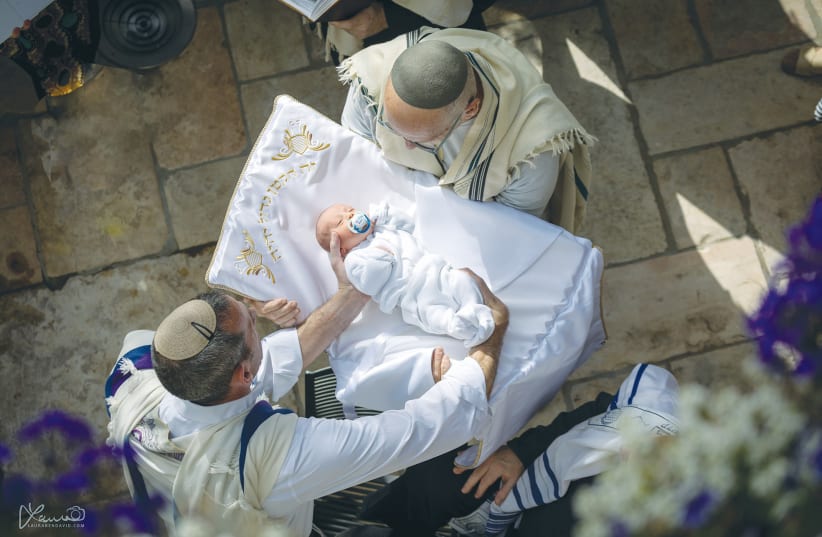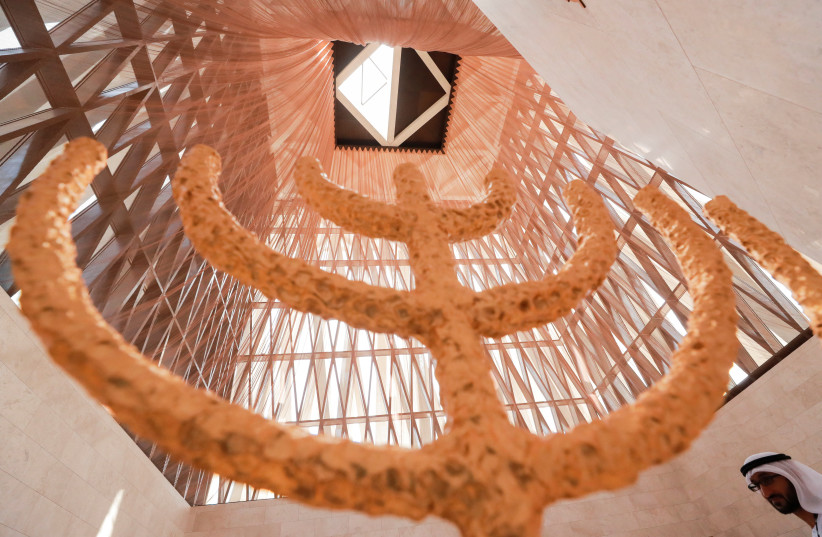I never thought I’d set foot in the United Arab Emirates, let alone do so twice in one week. But it just so happened that the two brit milah ceremonies I had there ended up being a week apart. And by chance, the first was 24 hours after my return from America for a family simcha. I barely left the airport before I was back for my next trip.
The flight to Dubai was a bit delayed upon arrival, so I had my eye on my watch to make sure I prayed the afternoon service before sundown. I was tempted to slip off into one of the prayer rooms I saw at the airport, but I wasn’t sure how well that would have been received.
As I arrived at the taxi stand, the person directing traffic sent me to a female driver in a hijab. Even though I’ve lived in the Middle East for quite some time, this was a first for me. She politely took my suitcase and we were off to my hotel. As the sun began to set, I inquired about our projected arrival time. We weren’t going to make it. So, I prayed mincha in the back of a taxi as my driver whisked us along our route. Another first.
One of the more memorable aspects of both brit milah ceremonies was those in attendance. At the first brit milah, one of the local rabbis was honored with being the sandak, who has the honor of holding the baby. Since the mother wasn’t Jewish, he and another local rabbi served with me as the Beit Din for the first step of the baby’s conversion.
At the second circumcision ceremony, the two local Chabad rabbis were part of the congregation. Due to the brit milah I performed on my first visit, I was concerned there may have been tension in the room. Chabad is known not to do conversions at all.
As we waited for the final guest to arrive, the more senior Chabad rabbi approached me. He introduced himself and then said, “You converted the baby last week. I didn’t know you could do that.” I proceeded to quote the sources that allow for conversion where the father is Jewish and the mother is not.
“No,” he replied, “I’m not questioning you, I just think it’s amazing. What a great way to bring more people into the fold.” I stood opposite him with my mouth agape. “Well, that’s what you’re all about, right? Bringing people in,” I responded. At the conclusion of the event, the rabbi asked for my details to be in touch if he needed.
The Abrahamic Family House includes the three major religions
WITH SOME of my downtime on the first trip, I made my way to the Abrahamic Family House in Abu Dhabi. One of the two rabbis who sat on the Beit Din with me was serving as the rabbi there, and he implored me to come and see it. Before my arrival, I was hesitant about making the 45-minute trek to see what I thought was nothing more than a synagogue. I couldn’t have been more incorrect.
The Abrahamic Family House is a government-sponsored prayer space, housing the three major religions, in one plaza. The three structures – the synagogue, the church and the mosque – have identical dimensions, although the design of the interior and exterior are unique.
I was fortunate to catch a tour of the facility before meeting my colleague. My tour guide was a woman of Islamic faith who was blown away when I pointed out my name carved in Hebrew on the first water fountain we encountered. I didn’t have the heart to tell her how commonplace the word “life” is in our tradition.
As we toured each of the three structures, I was surprised not only to find a space for baptisms, but also a mikveh, and even a beit midrash (study hall). The learning space only had Haggadot and prayer books on the shelves, so I asked if the foundation was looking for donations. She laughed and said, “Don’t worry, we have more than enough money.” I guess it’s good to have government funding in that region.
The mosque was the last stop on the tour. There were impressive arches intended to give the sense of being in the cave where Muhammed received the Koran. The tour guide taught us that the space at the front of the room is called the “kaban” and its curved shape is meant to indicate the direction of Mecca. I was shocked.
“Kaban is the same word in Hebrew: Kivun (the bet and vet are interchangeable), which means direction or intention,” I explained. She subsequently overheard an Israeli father in the group telling his son about the columns (amudim) in the room. She was taken aback, and commented, “That’s what we call them in Arabic, too.”
“This all makes sense,” I replied, “we are cousins, remember?”
When I met with my colleague at the end of the tour, he was chumming it up with an Arab man in full traditional garb. I wasn’t sure what to make of the interaction because I had never seen a person in a kippah talking to a person in a thobe and turban. But when they laughed and embraced I couldn’t believe my eyes.
As we sat and spoke together, I was gripped by the inspirational work my colleague was doing. He interacts on a weekly basis with people of all religions – from secular Jews who are so moved by the mission of the Abrahamic Family House that they have to perform some ritual, to people of other faiths who’ve never met a Jew before. The potential to reach and affect people from all over the world and from all walks of life is astounding.
THESE STORIES made me think that this place, in the middle of the Arab world, could lead to the days to come. But as I returned home to the news of Jews harassing Christians in the Old City, I was quickly brought back to reality. Jews were spitting on the ground as non-Jews walked by and there were unsanctioned demonstrations taking place at the Western Wall, desiring to bar non-Jewish visitors to our holy site. We have such a long way to go. But there is no doubt in my mind that the answer comes from the Abrahamic Family House.
A constant theme I’ve heard throughout my work is: if only we could replicate the Hillel model beyond the college campus. I feel like I saw a glimpse of that in the UAE. I’m sure there are interdenominational politics in the Jewish community there, but from where I sat, everyone met each other with open minds and open hearts.
But the Abrahamic Family House is like Hillel 2.0 and it’s already part of the real world. We all need to learn from this model, especially here in Israel, and meet our brothers and sisters from other faiths with open arms and open hearts. It will prove to be the main path on our way to peace.
The writer is a rabbi, a wedding officiant, and a mohel who performs ritual circumcisions and conversions across the world. Based in Efrat, he is the founder of Magen HaBrit, an organization protecting the practice of brit milah and the children who undergo it.

